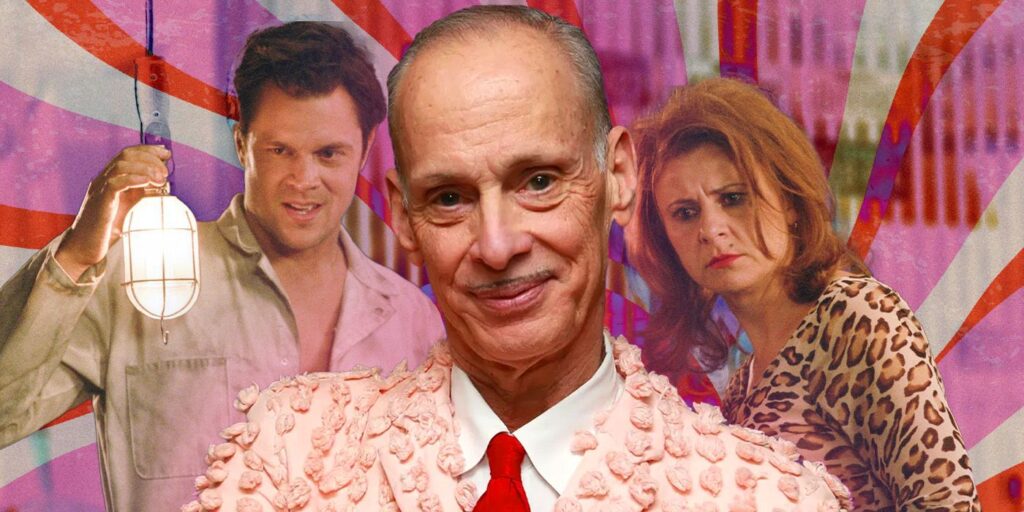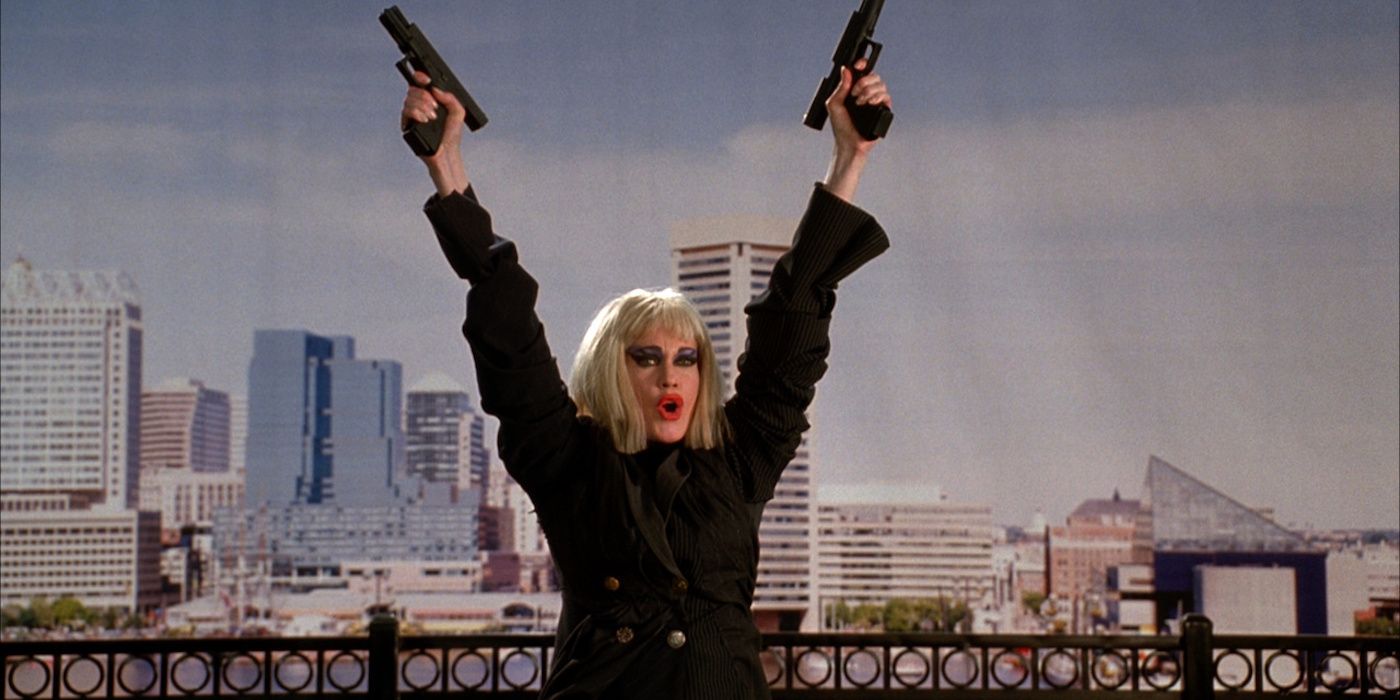John Waters Hasn’t Made a Movie in Over 20 Years, but His Absurd NC-17 Sleazefest Might Just Be the Perfect Swan Song

It’s been more than two decades since John Waters directed a film, although he’s kept himself busy with museum exhibits, touring his one-man show, and writing his first novel, Liarmouth, which came close to being made into a movie with Aubrey Plaza. Although his singular sense of camp humor has been sorely missing from the big screen, it might be hard to top his last outing, A Dirty Shame, which reaches a sort of apex of bad taste. Released in 2004, it represents a return to the gleefully shocking exploitation flicks that made Waters famous, produced with the same level of craft as his more mainstream outings. It’s the biggest budgeted sleaze-fest ever made, serving as a sort of magnum opus for the Pope of Trash.
‘A Dirty Shame’ Was a Return to John Waters’ Roots
Set in Waters’ beloved Baltimore, A Dirty Shame stars Tracey Ullman as Sylvia Stickles, a suburban convenience store owner with an uptight view of sex. Sylvia is so repressed that she’s locked her large-breasted daughter, Caprice (Selma Blair), in the garage so she can’t keep dancing at the local go-go club under the name Ursula Udders. That all changes when Sylvia is whacked on the head and suffers a concussion that turns her into a sex addict. She quickly falls under the spell of Ray-Ray Perkins (Johnny Knoxville), leader of a gleeful group of sex addicts who indulge in fetishes heretofore never before known to man. This puts them directly at odds with the town’s more puritanical citizens, led by Big Ethel (Suzanne Shepherd) and Marge the Neuter (Mink Stole).
By the time he made A Dirty Shame, Waters had achieved a level of mainstream success that would’ve seemed unimaginable in the days when he was directing movies like Pink Flamingos and Female Trouble. Made on a shoestring and headlined by the drag queen Divine, these films were sold to audiences almost exclusively on their shock value, in much the same way that Waters’ idols — William Castle, Roger Corman, Herschell Gordon Lewis — sold their low-budget shockers. As the trailer for Pink Flamingos promised, you were in for something gross, trashy, and wild. In spite of their nonexistent production value and cast of Baltimore locals (dubbed the Dreamlanders), the films had success on the midnight movie circuit, and won praise for their subversive humor. Eventually, Waters was given enough money to cast Divine alongside an established star, Tab Hunter, in his suburban satire Polyester.

Related
This Bonkers John Waters Film Blasted Indie Movies
John Waters turned his singular critical eye to film itself for this 2000 vision of insanity.
Post-Polyester, something seemed to change within Waters, and all of a sudden, he was channeling his love of kitsch and pop culture into the PG-rated nostalgia-fest Hairspray. From there, Waters became a studio comedy director, setting controversy aside for the star-driven vehicles Cry-Baby, Serial Mom, and Pecker. Although still infused with his trademark campiness, these films were gentler in tone than the trash extravaganzas of his youth. Hairspray even got turned into a Tony-winning Broadway musical (which was itself adapted into a 2007 film), while Waters became something of a household name thanks to The Simpsons and Woody Allen‘s Sweet and Lowdown. Perhaps spurned on by the gross-out success of There’s Something About Mary, Waters set out to prove with A Dirty Shame that he was still the king of bad taste. And boy, did he ever.
‘A Dirty Shame’ Is a Fitting Swan Song for John Waters
Water has never shied away from putting shocking material in his movies: after all, this is the man who had Divine eat literal dog poop in Pink Flamingos. Yet A Dirty Shame reaches an almost absurd level of bad taste, as if Waters were expelling all the pent-up raunchiness he’d been repressing in his gentler films. As Sylvia and the other residents of her quiet Baltimore suburb get whacked on the head more times than The Three Stooges, they’re finally able to indulge in sexual pleasures they’d previously kept hidden, with Waters staging some of his most outrageous comedy sequences. The highlight involves Sylvia dancing with her husband, Vaughn (Chris Isaak), at a senior center, and when the power of sex overtakes her, she lifts a water bottle off the ground without using her hands (we’ll let you use your imagination as to how). Like a sort of X-rated Alice in Wonderland, Sylvia encounters a variety of nymphomaniacs with bizarre fetishes, from adult babies to shelf-humpers.
Movies produced by big studios rarely get released with an NC-17 rating, yet A Dirty Shame was, as its near-encyclopedic listings of aberrant sexual behaviors made it nearly impossible to re-cut to an R-rating. Few American films have been as preoccupied with perversion as this one, and its mere existence is a triumph for Waters. The shock and horror that the “neuters” feel when confronted with the perverts can almost be seen as a reflection of how conservative audiences reacted to the director’s earliest films, which gleefully thumbed their noses at 1950s values. Culture ultimately caught up with Waters, and the once-renegade filmmaker became accepted by polite society, in much the same way that the perverts in A Dirty Shame eventually triumph. Given the realities of movie financing and aging, there’s no telling whether Waters will ever make another film. If he doesn’t, we can at least take solace in the fact that he achieved his goal of bringing bad taste to the masses. Dirty? Perhaps. But a shame? Far from it.






